Focke-Wulf 190
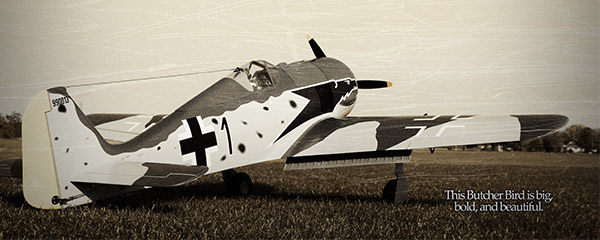
Written by Tom Sullivan As featured on page 40 in the January 2013 issue of Model Aviation. As featured in the Model Aviation tablet app.
Until recently, if you wanted to add the Fw 190 to your RC hangar, the only options were small, electric ARF models, or building a larger one from a set of plans. Fortunately, the people at Top Flite introduced this Luftwaffe legend as an ARF in Giant Scale!
With a wingspan of 85 inches, the Fw 190 meets the guidelines for International Miniature Aircraft Association competition, and because it’s modeled after the full-scale Fw 190, it can be used in fun-scale competitions and warbird fly-ins everywhere.
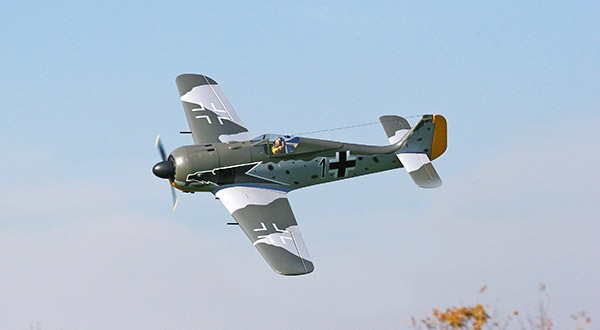
SPECIFICATIONS
Model type: Semiscale ARF
Skill level: Advanced builder; advanced pilot
Wingspan: 85 inches
Wing area: 1,198 square inches
Airfoil: Semisymmetrical
Length: 73.25 inches
Weight: 22 to 24 pounds
Engine requirements: 50cc to 55cc gas engine
Radio: Seven- to eight-channel radio with 9 to 12 servos
Retail price: $749.99
Price as flown: $2,550
TEST-MODEL DETAILS
Engine: DLE-55cc gas engine
Radio system: Futaba 8FG radio; Futaba R6008HS receiver; eight Futaba S3305 servos; two Futaba S9001 servos; one HydriMax 3600 mAh (receiver) and one 1600 mAh (ignition) NiMH batteries; two heavy-duty switch harnesses; two 24-inch servo extensions; two 12-inch extensions; six 6-inch Y harnesses
Ready-to-fly weight: 24.875 pounds
Flight duration: 12 minutes
Construction: Laser-cut balsa and plywood with balsa sheeting
Finish: Fiberglass and plastic parts and iron-on covering
Time to completion: 45 to 50 hours
PLUSES
• Prehinged control surfaces.
• Functional and scale split flaps are included.
• Prepainted fiberglass cowl, top hatch, landing gear, and tail wheel covers.
• Designed for Robart retracts (pneumatic or electric).
• Machined aluminum two-blade spinner, cannons, and antenna mounts included.
• A complete, good-quality hardware package, and a vacuum-formed cockpit that includes recessed gauges, a pilot’s seat, and side panels.
• In the air, it has a wide flight envelope—fast when you want it, and slow when you need it.
MINUSES
• No pilot figure included.
• Fitting the Robart tailgear retract requires trimming wood inside the fuselage to properly fit.
• Minor problems with the electric Robart retracts (see the text for details).
BUILD OVERVIEW VIDEO
FLIGHT VIDEO
Similar Articles
|





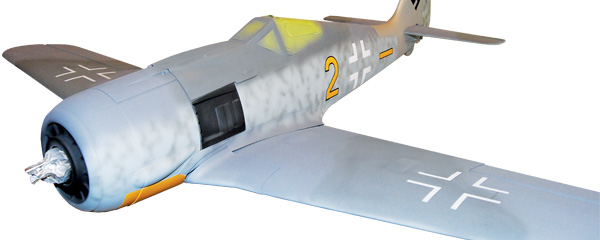
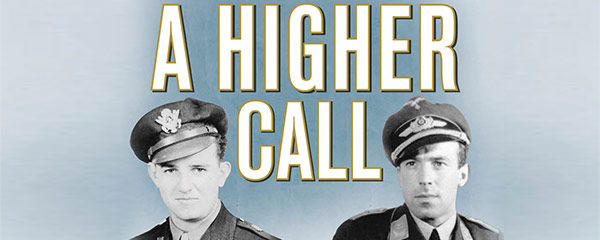
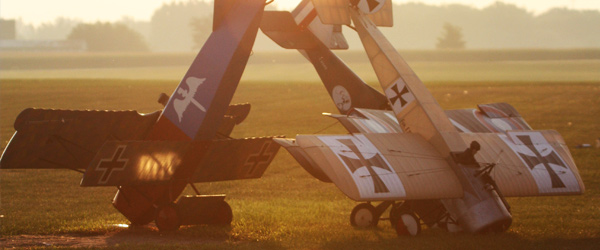





7 comments
Focke-Wulf 190 "Build"
ARFbash Time
WHERE WERE PICS OF THE ELECTRIC CONVERSION?
build comments
CG
RE: CG
G-62 mount
Add new comment